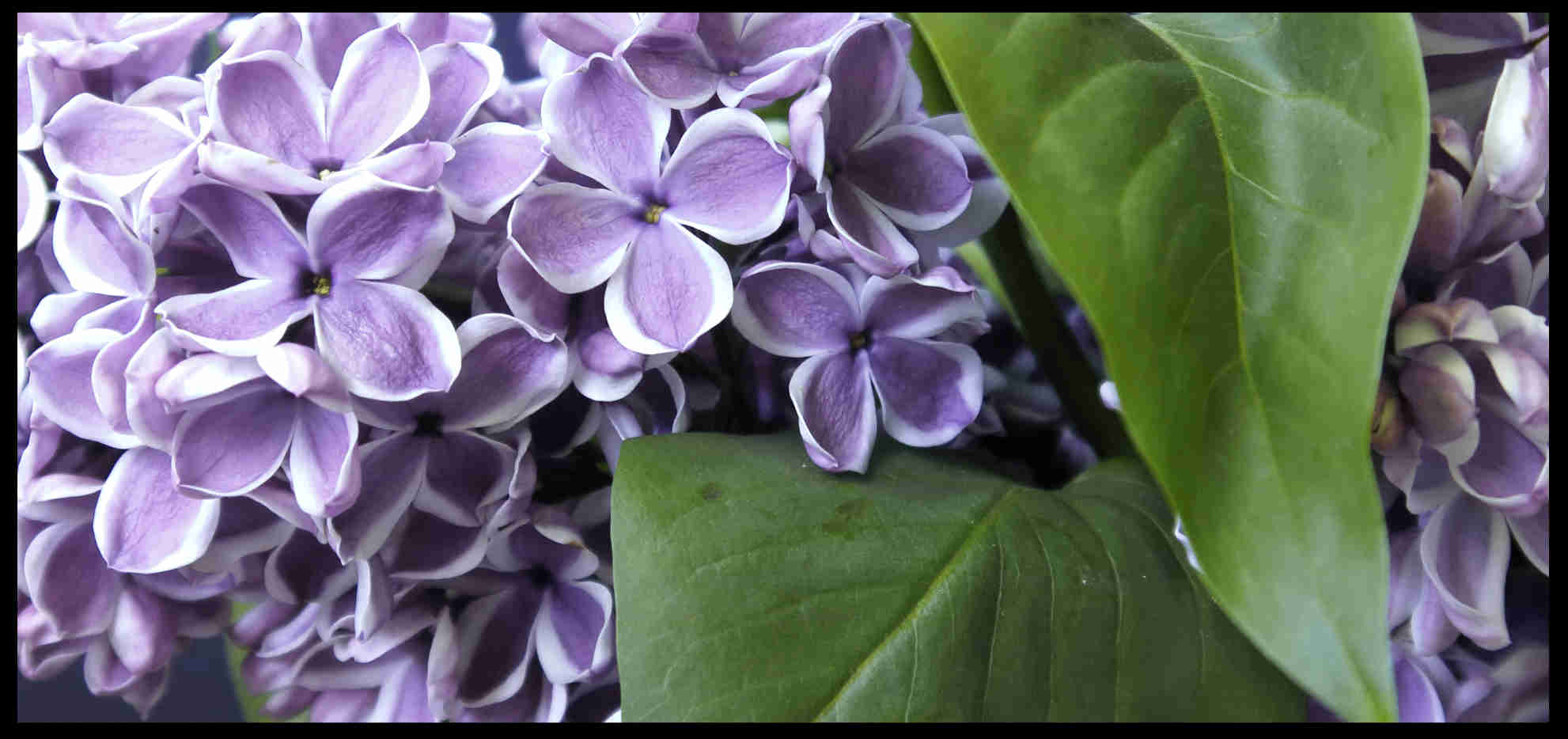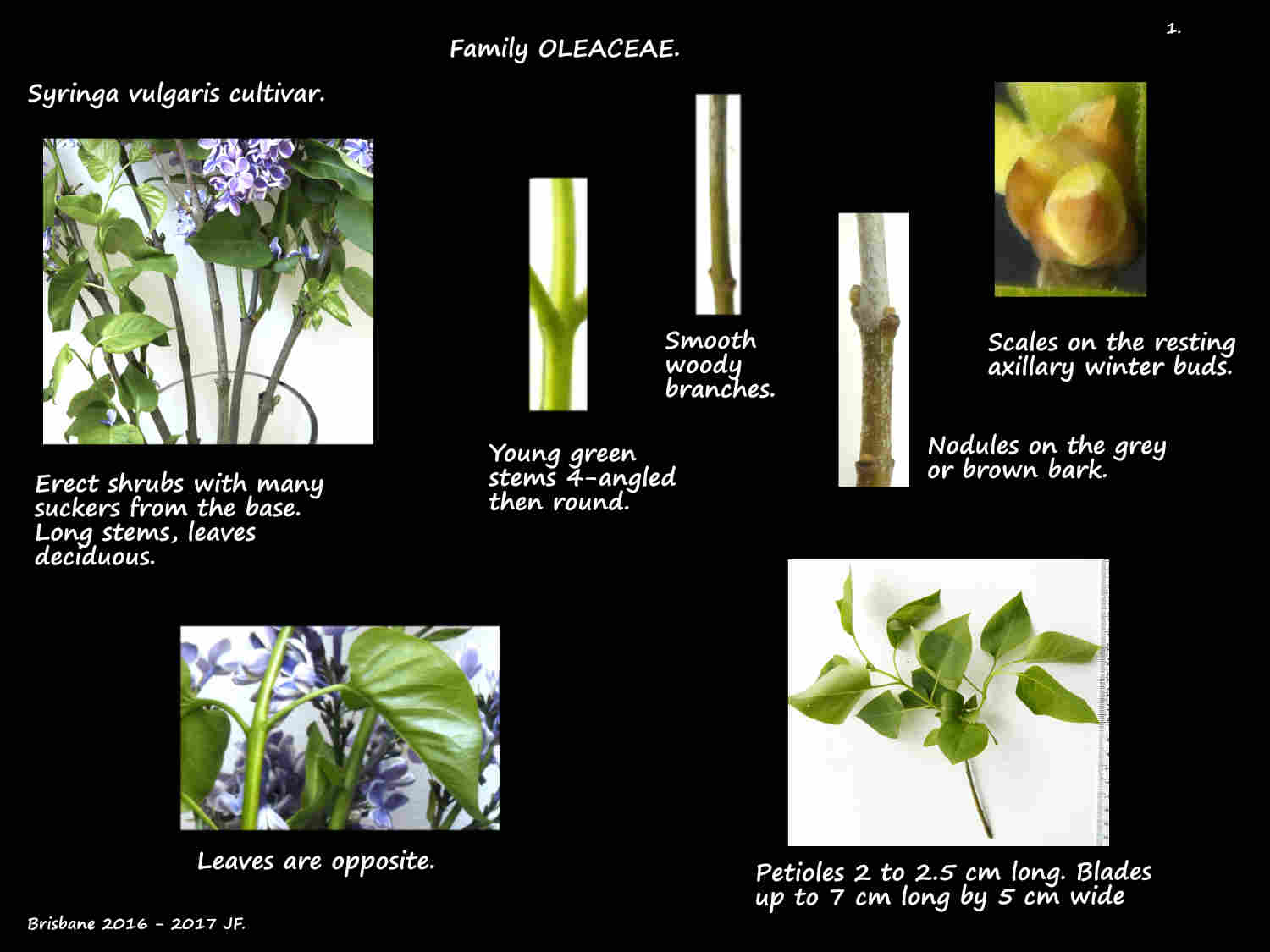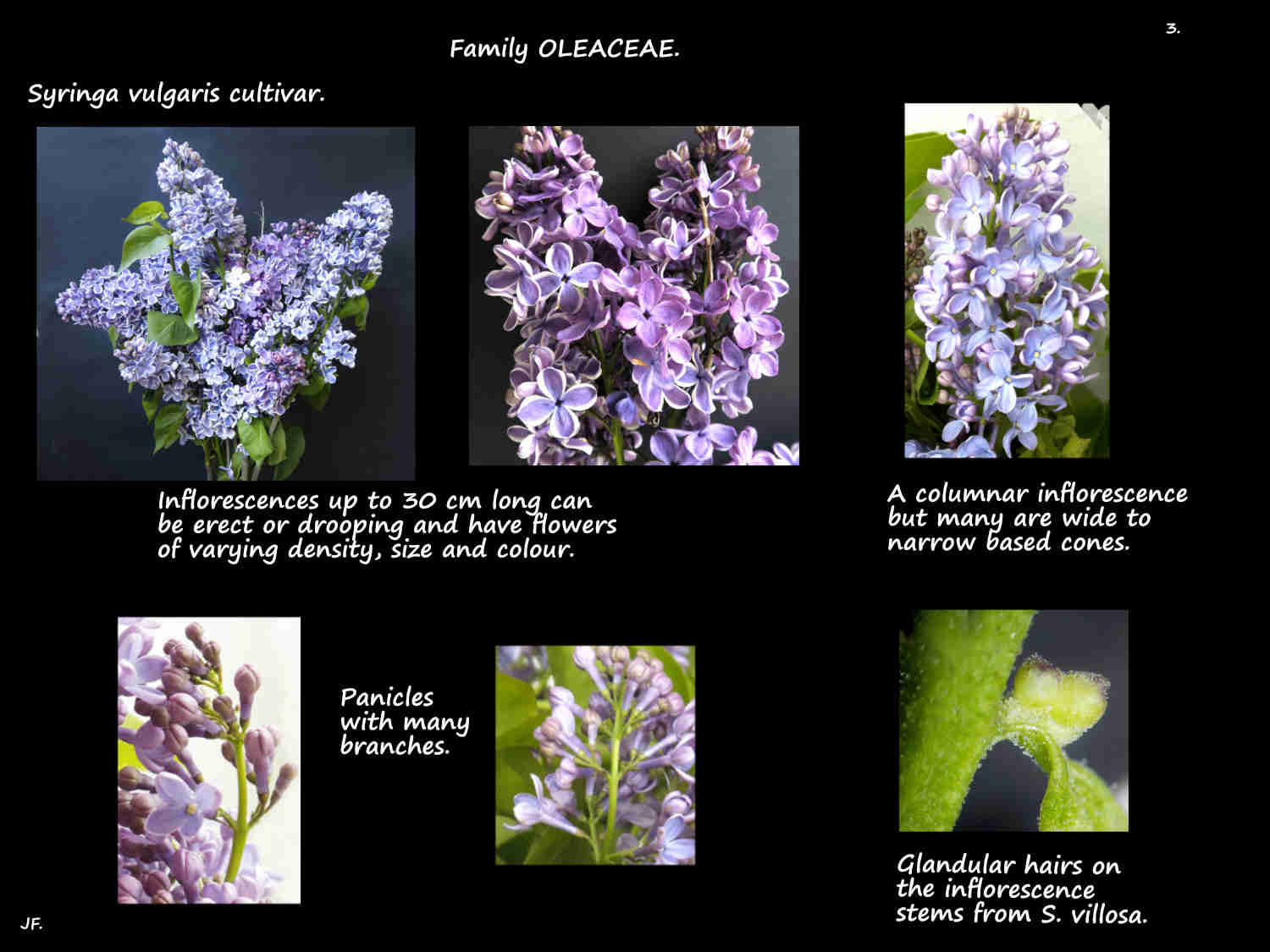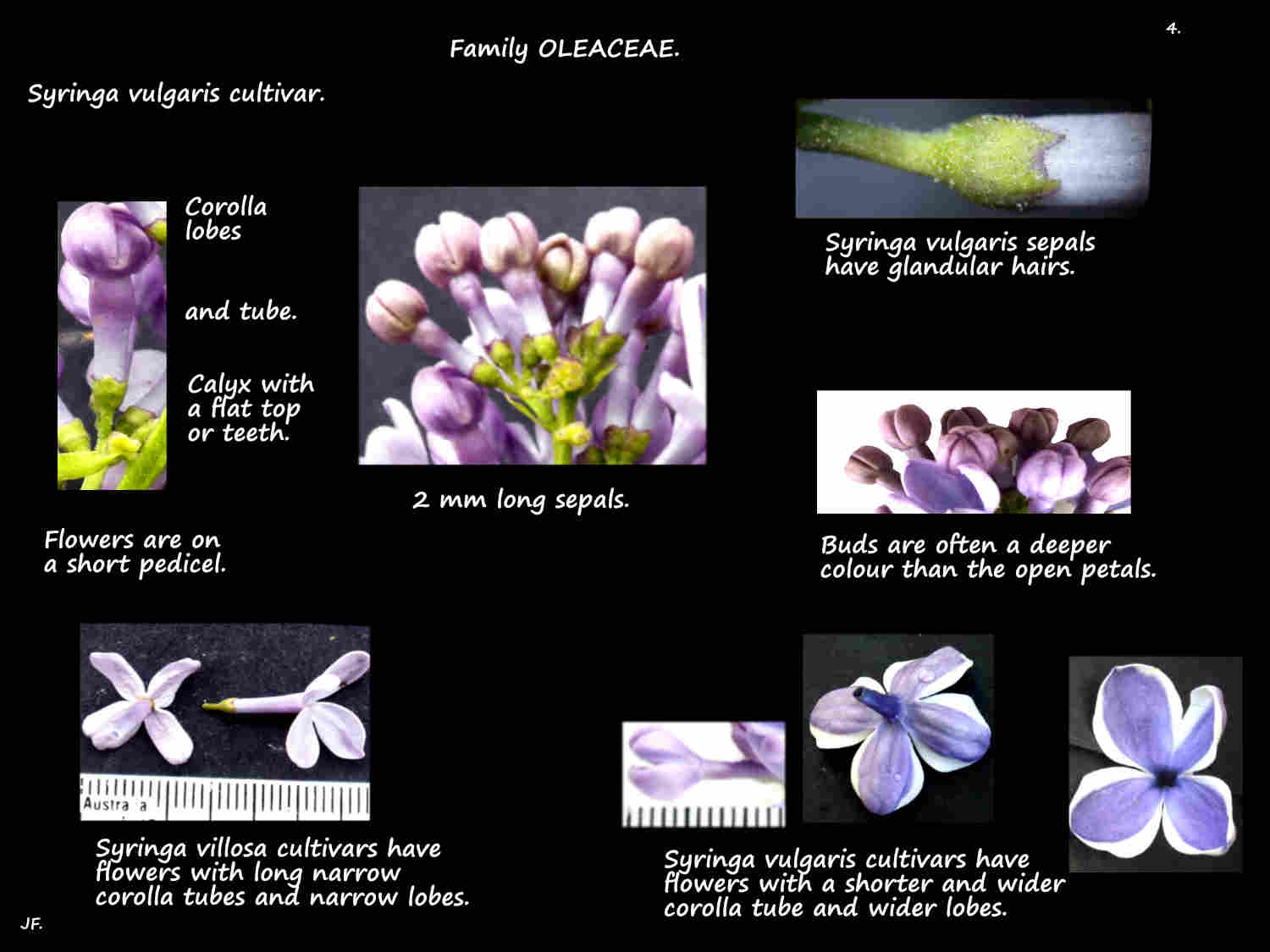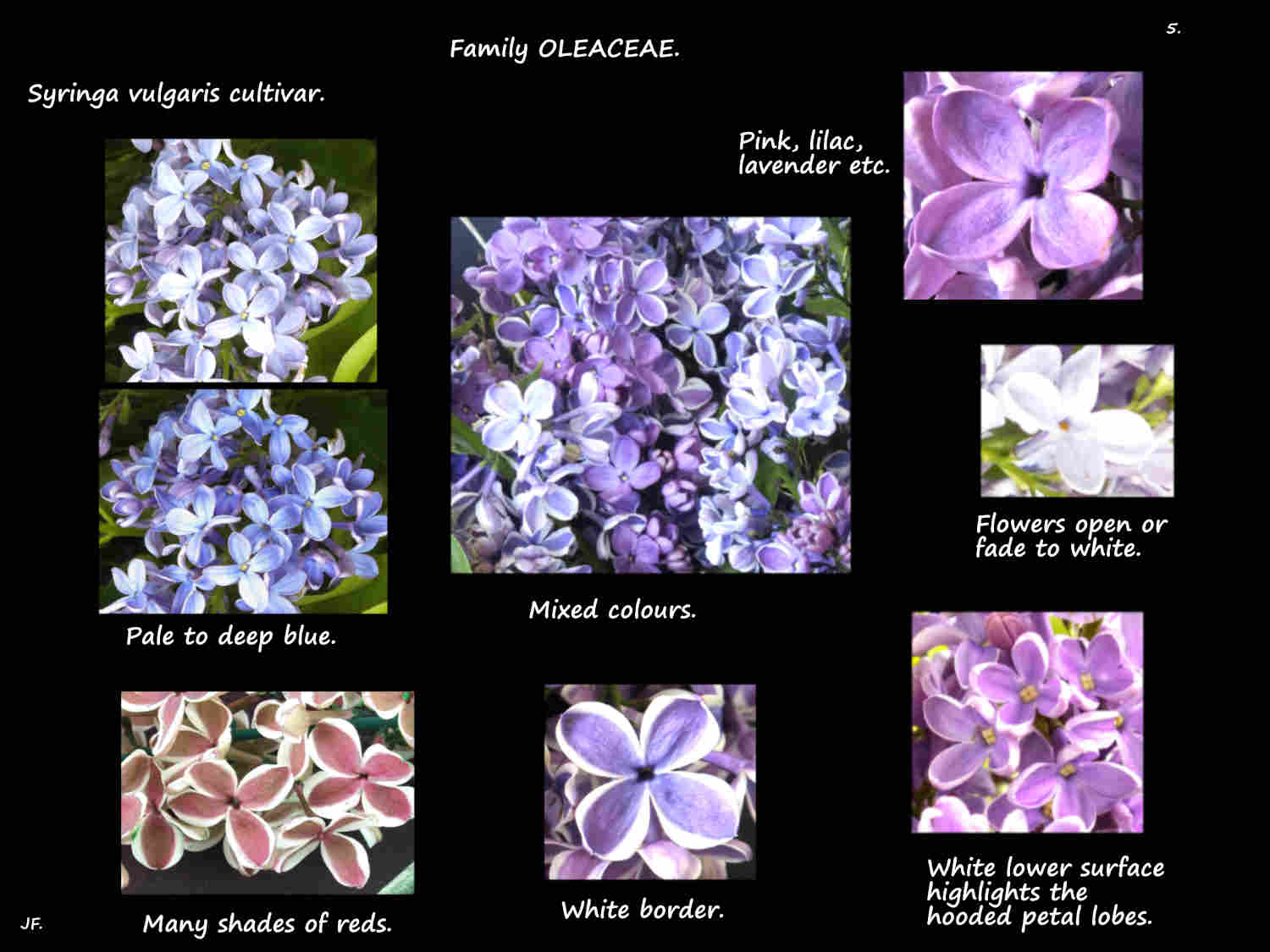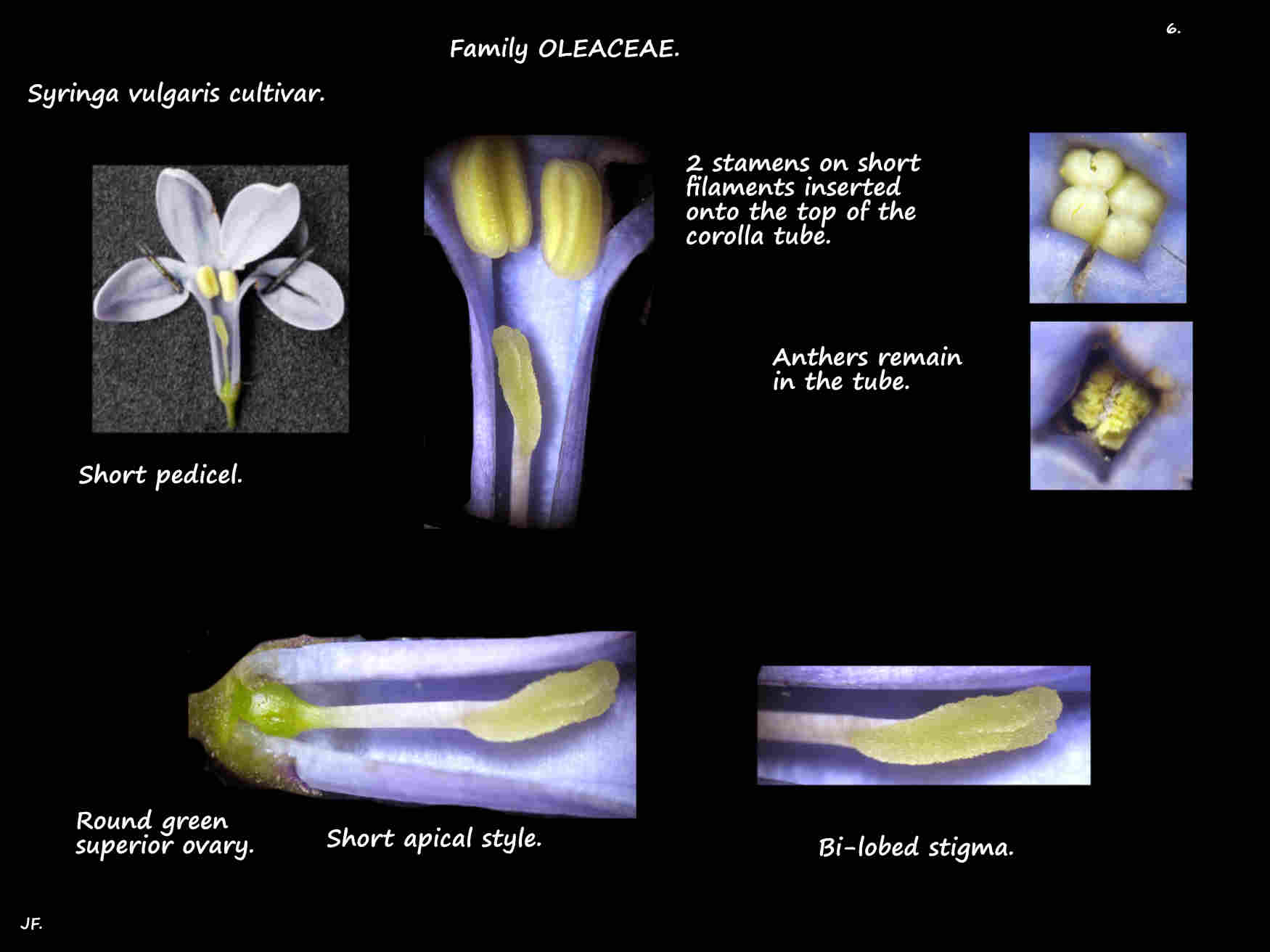Syringa vulgaris.
The Common lilac is from southeastern Europe.
They are deciduous shrubs or occasionally small trees to 6 m high.
They produce a lot of suckers from the roots and stems.
Small branchlets are 4-angled and older ones are circular in cross section.
Older brown or grey woody branches may have small nodules (lenticels).
The terminal winter bud has hairless brown scales.
The opposite leaves, up to 10 cm long are on a petiole around 2 cm long.
The triangular or lance-shaped blade is up to 6 cm wide.
The base is heart-shaped or flattish, the tip pointed and the edge smooth.
Branched axillary inflorescences are panicles that appear at the same time as the new leaves.
They develop from lateral buds on last years stems and have no leaf at the base.
The erect conical panicles are up to 20 cm high.
Flowers, on a short pedicel have a 2 mm long bell-shaped calyx.
The sepal bases are fused into a tube with 4 teeth on the rim.
There are glandular hairs on the edges.
The corolla has 4 petals around 1 cm long with their bases fused into a narrow tube.
The tips of the 4 (5) spreading round to ovate lobes curve in giving them a hooded appearance.
Numerous sub-species are described with flowers from purple to blue.
There are 2 stamens inserted onto the corolla tube and the anthers do not extend past it.
The superior ovary has a single style with a bi-lobed stigma.
Fruit are smooth brown loculicidal capsules up to 1.5 cm long and 5 mm wide.
Each of the 2 chambers has 2 winged seeds.
***********************
Lilac hybrids & cultivars.
There are over 1500 named cultivars including dwarf plants, some with bronze or purple new leaves and larger and /or more flowers in a wide range of colours.
There are single cultivars but most are now semi-doubles or doubles and the panicles can be up to 30 cm long.
There may be deeply coloured buds that open to paler flowers.
Petal colours include many shades and depths of lilac, purple, lavender, mauve, magenta, red, pink, burgundy, blue and yellow as well as white and cream.
Some are 2-toned or have a paler edge or outer surface.
Cultivars with Syringa villosa as a parent may have soft hairs on the leaves.
They also differ in having a long narrow corolla tube with narrower lobes.
J.F.
